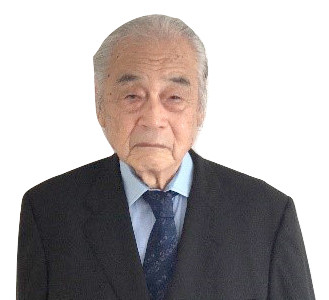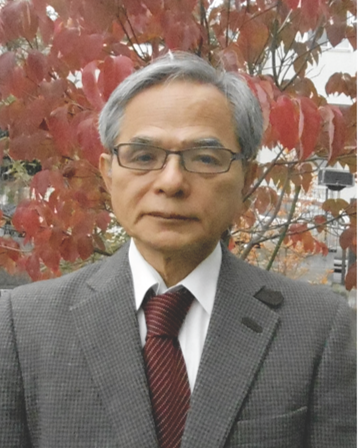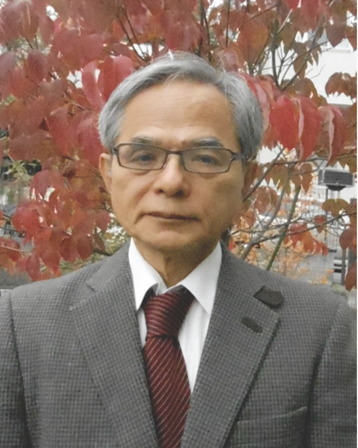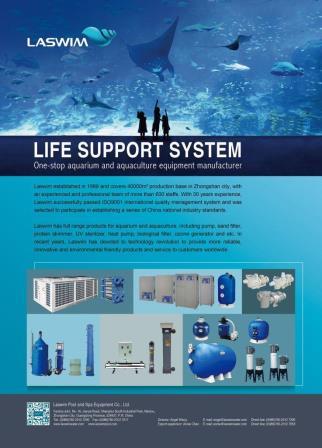Scientific Program
Keynote Session:
Title: Climate can be regulated by effective use of nox and waste water NP
Biography:
Shoichiro Ozaki is serving at The Institute of Physical and Chemical Research, Japan. His primary contribution is to achieve the first total synthesis of optically active myo-inositol trisphosphate, and a wide range of other inositol phosphates and lipids for subsequent physiological studies. He discovered DAB: regulator of Ca2+ release, anti-aging reagents. He is proposing method to protect global warming. His method is promotion of CO2 assimilation by effective use of NOx and drainage nitrogen, phosphorous, many countries hating NOx as pollution gas and eliminating by ammonia. He is considering that NOx is best promotor of CO2 assimilation. For the promotion of CO2 assimilation, NOx elimination should be stopped.
Abstract:
Shoichiro Ozaki is serving at The Institute of Physical and Chemical Research, Japan. His primary contribution is to achieve the first total synthesis of optically active myo-inositol trisphosphate, and a wide range of other inositol phosphates and lipids for subsequent physiological studies. He discovered DAB: regulator of Ca2+ release, anti-aging reagents. He is proposing method to protect global warming. His method is promotion of CO2 assimilation by effective use of NOx and drainage nitrogen, phosphorous, many countries hating NOx as pollution gas and eliminating by ammonia. He is considering that NOx is best promotor of CO2 assimilation. For the promotion of CO2 assimilation, NOx elimination should be stopped.
Title: Climate neutral now pledge at Sharjah Electricity and Water Authority
Biography:
Fatima Al Kadhim is an Emirati working in the safety, health and environment field at Sharjah Electricity and Water Authority. She has graduated from the American University of Sharjah with a bachelor’s degree in Environmental Sciences.
Abstract:
Climate change impacts everyone across the globe either directly or indirectly. To tackle the issues posed by the changing climate, individuals, governments and private organizations need to take action. One step towards addressing this challenge is reducing greenhouse gas (GHG) Emissions. This report explains the steps undertaken by Sharjah Electricity and Water Authority (SEWA) to measure reduce and offset emissions for the year 2018, in order to achieve Climate Neutral Now (CNN) status which is an initiative of the United Nations Framework Convention on Climate Change (UNFCCC). The financial control approach has been used to define organizational boundaries for the GHG inventory for the SEWA head office and SEWA Zulal water factory. The results of the calculations show that the total emissions were 4548 tons of carbon dioxide (tCO2). Head Office emissions were 2186 tCO2 while the Zulal factory was 2359 tCO2. The measures are undertaken to reduce energy consumption which in turn reduced GHG emissions include boiler retrofit, hybrid forklifts, efficient lighting, efficient printers, efficient HVAC systems, and temperature control. Finally, the number of units canceled was 4550 tCO2 and an equivalent amount of Certified Emissions Reductions (CERs) was purchased from UNFCCC approved Clean Development Mechanism (CDM) project no. 2698 to offset unavoidable emissions.
Title: Application of plant factory and space-based power generation, preservation of foods in Antarctic, and safe package to decrease victims by global cooling
Biography:
Yoshinori Hayakawa has been engaged in medical physics. He developed simultaneous neutron monitoring system for Boron-Neutron-Capture-Therapy, developed new method of pulsed proton beam dosimetry by ionization chamber. He has measured first in the world acoustic pulse generated in the body of treated patient by pulsed proton beam. The phenomenon may be used to monitor dose distribution in patients as planned or not.  He is interested in researches on wellbeing of human life. He has developed computer numerals, new abacus numerals, computer abacus, and universal literacy alphabet for improving basic education to reduce poverty. He has developed universal literacy alphabet as well. He has proposed and published an original research article of proposal of artificial pandemics by infectious attenuated live influenza vaccine to reduce victims of new influenza.
Abstract:
Global warming by carbon dioxide is insisted on by the IPCC. But according to observations in Hawaii, the variations of the temperature are ahead and the variations of the carbon dioxide follow. The insistence that increases in carbon dioxide concentration in the air promotes global warming is wrong. On the contrary, little ice age like Maunder minimum of 17 century is approaching shown by the decrease of sunspots. The decrease of sunspots means the decrease of the solar magnetic field that protects galaxy cosmic rays. The increase in the galactic cosmic rays in the air generates clouds and reflects sunlight to cool the earth. Currently, the sunspots are decreasing (minimum period). The temperature will be lowered similarly to the Maunder minimum in the 17th century (little ice age). Agriculture will be damaged and a certain scientist estimates two milliard people will be starved to death. Even world war three may occur. Proposed is to construct plant factories using LED lights or high-pressure sodium lamps to reduce victims. The electric power necessary is to be created by space-based solar power generation as the remaining underground fuels are to be lost within approximately 100 years. Plant Factories in large scale to produce even crops are possible if sufficient electric powers for lamps are supplied. Basic technological problems of Space-Based solar power Generation are already solved. The power should be sent by microwaves to penetrate clouds and rain.
Title: Application of plant factory and space-based power generation, preservation of foods in Antarctic, and safe package to decrease victims by global cooling
Biography:
Yoshinori Hayakawa has been engaged in medical physics. He developed simultaneous neutron monitoring system for Boron-Neutron-Capture-Therapy, developed new method of pulsed proton beam dosimetry by ionization chamber. He has measured first in the world acoustic pulse generated in the body of treated patient by pulsed proton beam. The phenomenon may be used to monitor dose distribution in patients as planned or not. He is interested in researches on wellbeing of human life. He has developed computer numerals, new abacus numerals, computer abacus, and universal literacy alphabet for improving basic education to reduce poverty. He has developed universal literacy alphabet as well. He has proposed and published an original research article of proposal of artificial pandemics by infectious attenuated live influenza vaccine to reduce victims of new influenza.
Abstract:
Global warming by carbon dioxide is insisted on by the IPCC. But according to observations in Hawaii, the variations of the temperature are ahead and the variations of the carbon dioxide follow. The insistence that increases in carbon dioxide concentration in the air promotes global warming is wrong. On the contrary, little ice age like Maunder minimum of 17 century is approaching shown by the decrease of sunspots. The decrease of sunspots means the decrease of the solar magnetic field that protects galaxy cosmic rays. The increase in the galactic cosmic rays in the air generates clouds and reflects sunlight to cool the earth. Currently, the sunspots are decreasing (minimum period). The temperature will be lowered similarly to the Maunder minimum in the 17th century (little ice age). Agriculture will be damaged and a certain scientist estimates two milliard people will be starved to death. Even world war three may occur. Proposed is to construct plant factories using LED lights or high-pressure sodium lamps to reduce victims. The electric power necessary is to be created by space-based solar power generation as the remaining underground fuels are to be lost within approximately 100 years. Plant Factories in large scale to produce even crops are possible if sufficient electric powers for lamps are supplied. Basic technological problems of Space-Based solar power Generation are already solved. The power should be sent by microwaves to penetrate clouds and rain.
Title: Promotion of Þsh industry by effective use of NOx and waste water NP is best method to get much Þsh and long life
Biography:
Shoichiro Ozaki is serving at The Institute of Physical and Chemical Research, Japan. His primary contribution is to achieve the first total synthesis of optically active myo-inositol trisphosphate, and a wide range of other inositol phosphates and lipids for subsequent physiological studies. He discovered DAB: regulator of Ca2+ release and anti-aging reagents. He is proposing method to protect global warming. His method is promotion of CO2 assimilation by effective use of NOx and drainage nitrogen, phosphorous, many countries hating NOx as pollution gas and eliminating by ammonia. Ozaki is considering that NOx is best promotor of CO2 assimilation. For the promotion of CO2 assimilation, NOx elimination should be stopped. Drainage NP elimination should be stopped.
Abstract:
Shoichiro Ozaki is serving at The Institute of Physical and Chemical Research, Japan. His primary contribution is to achieve the first total synthesis of optically active myo-inositol trisphosphate, and a wide range of other inositol phosphates and lipids for subsequent physiological studies. He discovered DAB: regulator of Ca2+ release and anti-aging reagents. He is proposing method to protect global warming. His method is promotion of CO2 assimilation by effective use of NOx and drainage nitrogen, phosphorous, many countries hating NOx as pollution gas and eliminating by ammonia. Ozaki is considering that NOx is best promotor of CO2 assimilation. For the promotion of CO2 assimilation, NOx elimination should be stopped. Drainage NP elimination should be stopped.
Oral Session 1:
- Climate Change Challenges & Sustainability | Global Warming | Agriculture Technology | Aquaculture and Marine Biology

Chair
Shoichiro Ozaki
Ehime University, Japan
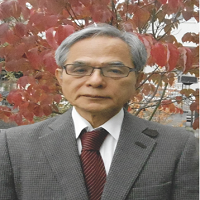
Co-Chair
Yoshinori Hayakawa
Toin University of Yokohama, Japan
Title: Plasticulture applications for enhanced productivity and sustainable agriculture: An Indian perspective
Biography:
Rohit Lall is a post-graduate in agricultural engineering with specialization in soil & water conservation engineering (MTech). He also completed his training from MASHAV-CINADCO, Israel on Plastics in Agriculture- Innovations & Applications. He has been associated with plasticulture for more than a decade and has contributed technical inputs towards development and uptake of plasticulture interventions under centre sector programs and flagship schemes of GoI. During the association with the current assignment he has been a member under technical/sectional committees of Bureau of Indian Standards (BIS) for developing/ revision of various plasticulture standards in the country. Contributed monthly articles for AIPMA plastic news for the entire year towards creating awareness on plasticulture applications to leading plastics manufacturers and represented internationally at Spain, China, and Israel.
Abstract:
Plastics as a product have inevitable advantages in all spheres on the globe but need judicious disposal management to address the menace and to avoid soil & air pollution. Use of plastics in agriculture has been termed as “Plasticulture” wherein components/products/equipment are integrated to form an application such as micro-irrigation systems, polyhouses, plastic mulches, crop covers, etc. to generate more quality and enhanced cultivation of the product with limited resources such as water in per unit area. India being an agrarian driven economy where more than 70% of the population is directly or indirectly related o agriculture contributes not only to suffice the food basket but also to produce more which could provide remunerative income to the Indian growers as India being a varied agro-climatic country can produce almost all agriculture/horticulture produce. Developing field oriented and in-situ experimental details through well-knitted dedicated 22 Precision Farming Development Centres (PFDCs) and having focused approach by providing financial assistance under the flagship schemes to the beneficiaries have throttled the adoption of these applications in last two decades with global footprints in leading the productivity of many crops. Joint ventures of the leading agriculture/horticulture product related companies have also boosted the growth of these technologies and had put India to a self-sufficient Agri/Horti producer despite climate resilience and recurring droughts. These applications have not only provided food production sustainability but also have generated employment opportunities to the rural youth besides the upliftment of the Indian growers. Dedicated missions, policies and extensive government support across the country have proved to be a milestone in the agriculture history of the country. Thus we could see and also can say that the next Green Revolution in India could only be achieved through plasticulture applications & technologies in providing and managing the inputs in a precise and regulated manner by use of these technologies.
Title: Diverse responses of local giant swamp taro under saline swamp environment in the FSM
Biography:
Abstract:
To ensure security of this food source, 43 cultivars from Pohnpei and 30 cultivars from Chuuk were collected and grown in a swamp with an average salinity of 1,300 ppm (0.13 %) to identify salt-tolerant varieties. For two years, these seedlings were monitored for plant height, number of petioles and leaves, monthly corm diameter increment, leaf damages, leaf width and length, seedling survival and sucker number. The 43 cultivars were grouped into 15 clusters based on their morphological characterization. These clusters were soaked under high water salinity level using ocean water averaging 53,000 ppm (5.3.%) for seven hours to determine their responses to salinity including losses in biomass, corm masses, root number and length. Two cultivars were identified with more than 2-cm monthly diameter growth and more than 80% survival rates under natural swamp condition. From the 7-hour soaking experiment, few cultivars were identified with minimal root damages. This study recommended root number before and after soaking in highly saline water as a practical indicator in identifying a salt-tolerant giant swamp taro cultivar.
Title: Development of a decision support system, DOMIS for designing micro irrigation systems
Biography:
Thakur Bahadur Singh Rajput has completed his PhD from Indian Agricultural Research Institute New Delhi after his MTech degree from Indian institute of Technology Kharagpur, India. He has over forty years of experience as a research scientist at Water Technology Centre. He is a water management scientist of repute with highest award in Agricultural Research in India, to his credit. He has published over 200 papers, ten books and a large number of Technical Bulletins and extension leaflets. He has guided thirteen PhD and six MTech students for their research and was awarded as the best teacher by Indian Council of Agricultural Research.
Abstract:
A decision support system namely DOMIS (Design of Micro Irrigation Systems) was developed for standardizing the designs of Drip, Sprinkler and Micro Sprinkler irrigation systems. The decision support system was developed using standard formulae with richness of knowledge and expert opinions. Flexibility and simplicity of use make the DSS DOMIS a superior tool for designing micro irrigation systems. The DSS provides knowledge, expert opinion and necessary data on crops, soil, water and climate in the form of default options at different interactive stages of the software. The DSS also allows the user to make appropriate changes in the parameters provided by the DSS, if the user so desires. DSS-DOMIS suggests most optimal layout plan for main, sub-main and lateral pipes with appropriate sizes of different components including pipes, pumping system, filters and fertilizer application systems. The web based system has been hosted on the net with domain name http://domis.iari.res.in. Besides the design of micro irrigation systems, the DSS provides complete list of concerned state and district officials, approved micro irrigation system suppliers and the general information about the district, different government schemes and their implementing agencies all over the country. The decision support system will be useful for industry, farmers, students, researchers and policy makers. The DSS is available for use or free on line and the author will appreciate the feedback and suggestions from the users for its further improvement.
Title: Climate change and sustainable development - A developing country's perspective
Biography:
Sanjeet Purohit is a Humanities and Law Graduate from Jai Narain Vyas University, Jodhpur, one of the esteemed universities of Rajasthan, he has been practicing law at the Rajasthan High Court, Jodhpur, district courts and tribunals within the State of Rajasthan since the year 2001. He started his professional career with the stalwarts of their times and now sitting judges, Hon’ble Justice Govind Mathur and Hon’ble Justice Gopal Kishan Vyas and with the senior counsel Mr. P. K. Lohra, I gained first-hand experience in different areas of law under their able guidance. In a career span of a decade, he has been dealing with matters involving constitutional law, civil laws, economic laws, human rights law and environmental laws. He is having core interest and passion for work in the area of environmental law, had written a book “Commentary on National Green Tribunal Act, 2010” and been involved in suggesting to the Ministry of Environment, Forest and Climate Change as well as the Parliamentary Standing Committee regarding various amendments or policy decision to be taken in the field of environment. He is representing MoEF & CC in many cases before the National Green Tribunal, Principal Bench, New Delhi. He is endeavoring to achieve sustainable growth in the society by striking a balance between preservation of the environment and human rights vis-à-vis the growth of liberalized economy has been one of the major initiatives taken by me along with various organizations, lawyers and other professionals.
Abstract:
We live in an emblematic era. We have never been here before and if we do not come together with common purpose and an indefatigable strive to make this planet a better place to live in, it would surely not keep us long. This paper is an attempt to critically dissect India’s journey as a developing country in combating climate change with the help of sustainable development. The objective pursued herein is to identify and share replicable takeaways for developing countries which endeavour to strike a balance between their economic aspirations and obligations to posterity. The research is constricted to the examining policy decisions and steps undertaken by India in an attempt to fulfil its obligations under the Paris Agreement. It shall include a comprehensive analysis of its Biennial Update Report(s) and National Communication to United Nations Framework Convention on Climate Change and the Forestry Sector. In order to understand this journey, Governance, Policy Decision and other paradigm shifts are assimilated, observed and analysed so as to bring-forth a better understanding of what has worked and why. India faces challenges in economic development, which have to be met with the limited resources available, with minimal externalities and in the presence of large uncertainty with respect to climate. One of the growing and accepted approaches to overcome this development paradox is adoption of sustainable development paradigm, which entails development that meets the need of the present without compromising the ability of the future generation to meet their own needs. On 30th June, 2008, India announced and launched its National Action Plan on Climate Change - NAPCC. The NAPCC, guided by the principles of sustainable development aligns the environmental and economic objects. The NPACC identifies measures that promote our development objectives while also resulting in co-benefits in terms of addressing climate change. There are 8 National Missions which form the core of NAPCC. These 8 National Missions along with their objectives are mentioned herein under: A concerted effort is made to analyse in detail exhaustively and categorically the ripple effect of these Schemes on the ground in terms of measurable improvement. Followed by a critical evaluation as to if the steps undertaken have successfully accomplished its objectives. If yes, whether the success model can be replicated by other developing countries and if not, what can developing countries learn from India’s humble experience? A special focus is also maintained on other incidental steps undertaken to combat climate change while also discussing the most effective innovative and sustainable Governance solution that can easily be adopted by a developing country in its race to economic prosperity.
Title: Local resilience practices to climate change: A study on coping with flood vulnerability of a river-adjacent community of Bangladesh
Biography:
Md. Ashik Sarder is as a researcher and development practitioner, working at International Federation of Red Cross and Red Crescent Societies (IFRC), Bangladesh Country Office as Disaster Management Officer. He has earned graduation, post-graduation and MPhil degree in Anthropology from University of Dhaka, Bangladesh. During his professional career, he has also worked at Bangladesh Centre for Advanced Studies (BCAS), NGO Forum for Public Health and UNDP Bangladesh. He has the experience in working with issues like climate change, resilience, adaptation, migration, public health, disaster management and humanitarian responses.
Abstract:
The geophysical contexts of different areas of Bangladesh are diverse and distinctive from location to location. Each of the areas has distinct characteristics and varied livelihoods pattern. The recent climate change has made different communities of Bangladesh vulnerable to frequent disasters. The impact of climate change has also been visible at river-adjacent communities. So, enhancing community resilience is very important to make the community people capable to cope with climate change and ensure sustainable livelihoods for the future. If the community people become resilient, then they can come back in their previous usual situation within a very short period after any type of disaster. The Khasbarashimul community is a flood-prone community situated in the Sirajganj district of Bangladesh on the bank of Jamuna River with having Brahmaputra delta characteristics. Most of the community people are marginalized, and agriculture and day-laboring are the main means of their livelihood. Almost every year, a flood occurs and causes tremendous losses to property and livelihoods. The study has aimed to identify the flood vulnerability due to climate change on the Khasbarashimul community people and their livelihoods. The study has been conducted at the participatory observation approach using both qualitative and quantitative research perspectives. The study has identified some of the local and indigenous community resilience techniques which the community people usually used to practice by their own knowledge and experiences. Some of the other resilience techniques have also been suggested to make community people more resilient to disasters and flood risks resulting from climate change.
Title: Selenium nanoparticles impact on growth and biochemical composition of marine microalga Dunaliella tertiolecta
Biography:
Rozelindra Coz-Rakovac, DVM, MSc, PhD is a head of the Laboratory for Aquaculture Biotechnoloy within the RuÄ‘er Bošković Institute in Zagreb, Croatia. She is also a head of the Centre of Excellence for Marine Bioprospecting-BioProCro within the same institute. She is a senior scientist and holder of a number of awards and research projects.
Abstract:
The study investigated the impact of several concentrations of selenium nanoparticles (SeNPs) on growth performance and biochemical properties of marine microalgae Dunaliella tertiolecta. It is known that selenium (Se) effects may range from toxic to essentially micronutritive, both within a narrow concentration span. Thus, SeNPs might act as sources of Se, particularly due to being less toxic than sodium selenite (Na2SeO3). We have proved that their lower doses can increase algal biomass without any toxic cellular effect. The concentrations of chlorophyll A, total lipid and protein content, as well as composition of fatty and amino acids were determined in Dunaliella tertiolecta cultured under a wide range of different SeNPs concentrations for up to 14 days. Lower SeNPs not only positively impacted the biomass increase, but also chlorophyll a concentrations, as opposed to higher SeNPs concentrations. Total protein content and productivity were similar at all tested SeNPs concentrations, while fatty acids had higher content of unsaturated fatty acids in all tested samples. The results provide an insight into the effects of SeNPs on Dunaliella tertiolecta, which may lead to a set of various novel biotechnological applications.
Title: Adriatic shellfish as a source of polyunsaturated fatty acids-I
Biography:
Natalija Topi Popovi, DVM, MSc, PhD, senior scientist, is a member of Laboratory for Aquaculture Biotechnoloy within the Ruder Boskovic Institute in Zagreb, Croatia, and of the Centre of Excellence for Marine Bioprospecting-BioProCro within the same institute.
Abstract:
A great variety of organisms inhabiting seas and oceans are rich sources of fatty acids (FA). Marine biogenic lipids are vastly provided from the bivalves, which can successfully be farmed and enhanced. This work is focused on seasonal variation of fatty acid content and relative ratios of the specific polyunsaturated fatty acids (n-3 to n-6) in European flat oysters from the Adriatic Sea. Farmed seafood are natural products and are subjected to normal seasonal variations in composition that can affect nutritional functional properties. Increased understanding of these compositional variations is of interest for the industry for labeling and for health purposes. Also, there is a gap in the area of the links between consumption of Croatian aquaculture seafood and their benefits for human health. The aim of this research is to overcome this gap by identification of unsaturated fatty acids (n-3 and n-6) of native European flat oyster (Ostrea edulis L.) and to identify benefits that could be used to promote this seafood. Our research shows that the highest values of n-3 and n-6 polyunsaturated fatty acids occur in the winter and spring. Because of the potential for national health benefits and consequent reduction in health costs, this work supports harvesting of oysters for unsaturated fatty acids extracts as a national health priority and economical prosperity.
Title: Adriatic shellfish as a source of polyunsaturated fatty acids-II
Biography:
Tomislav Smuc, PhD is a Head of Laboratory for Machine Learning and Knowledge Representation in RBI, Zagreb, Croatia. He is the member of the Centre of Excellence for Marine Bioprospecting-BioProCro. His research interests are in the area of machine learning, data mining techniques and their applications in bio-science domains. Other coauthors are researchers (from doctoral students to senior scientists) working on the problematics of aquaculture.
Abstract:
A great variety of organisms inhabiting seas and oceans are rich sources of fatty acids (FA). Marine biogenic lipids are vastly provided from the bivalves, which can successfully be farmed and enhanced. This work is focused on seasonal variation of fatty acid content and relative ratios of the specific polyunsaturated fatty acids (n-3 to n-6) in European flat oysters from the Adriatic Sea. Farmed seafood are natural products and are subjected to normal seasonal variations in composition that can affect nutritional functional properties. Increased understanding of these compositional variations is of interest for the industry for labeling and for health purposes. Also, there is a gap in the area of the links between consumption of Croatian aquaculture seafood and their benefits for human health. The aim of this research is to overcome this gap by identification of unsaturated fatty acids (n-3 and n-6) of native European flat oyster (Ostrea edulis L.) and to identify benefits that could be used to promote this seafood. Our research shows that the highest values of n-3 and n-6 polyunsaturated fatty acids occur in the winter and spring. Because of the potential for national health benefits and consequent reduction in health costs, this work supports harvesting of oysters for unsaturated fatty acids extracts as a national health priority and economical prosperity.

